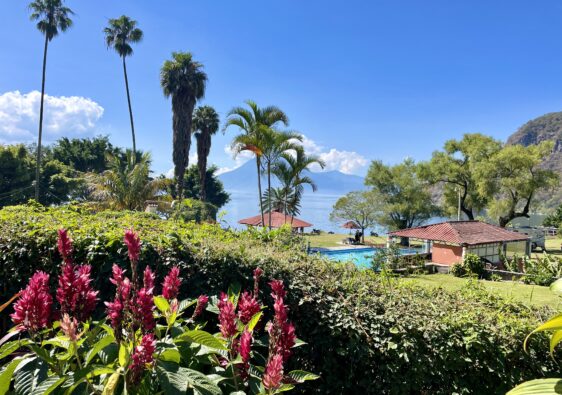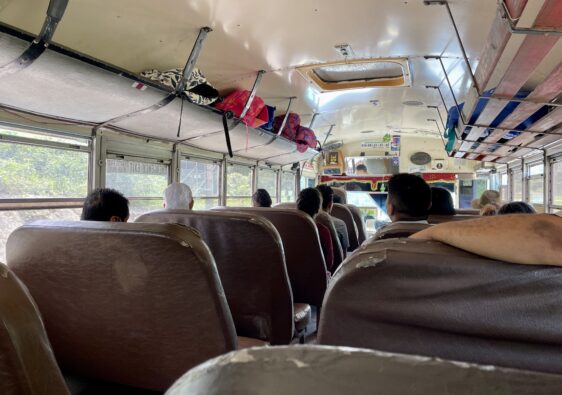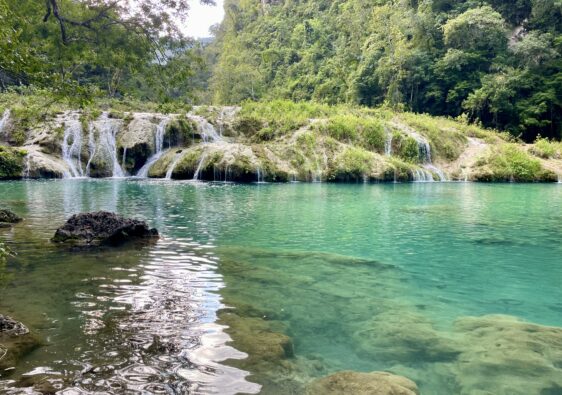Acatenango: The Hike of a Lifetime
This is the ultimate guide to the Acatenango Volcano Hike, one of Guatemala’s most popular tourist attractions. Summitting this massive volcano is no easy feat, but it is 100% worth it. For the bold (and decently athletic), there are two bonus hikes once you reach your basecamp.
The Acatenango Volcano hike is usually done as a 2-day, 1 night adventure. You’ll hike around 4 hours to get to your basecamp on Acatenango, where you’ll have amazing views of the Volcán de Fuego erupting. While you will likely have an amazing view from your basecamp, you can opt in for another 4 hour round-trip hike from your base camp to the Volcán de Fuego. This hike is hard, but so worth it for the beautiful sunset and a close-up view of Fuego’s lava once the sun goes down. You’ll return to basecamp to continue watching Volcán de Fuego erupt, eat dinner, roast marshmallows, and look back on a day well spent. In the morning you have the option to do a sunrise hike, which is from your basecamp to the top of Acatenango. After this, you’ll hike down to the trailhead and head back to Antigua!
In this guide to the Acatenango volcano hike, we’ll explore a typical itinerary, go over what you’ll need to bring, and answer some questions! Buckle up – this hike is hard but incredibly worth it.
Please note that some of the links below may be affiliate links, and at no additional cost to you, we earn a commission if you make a purchase.
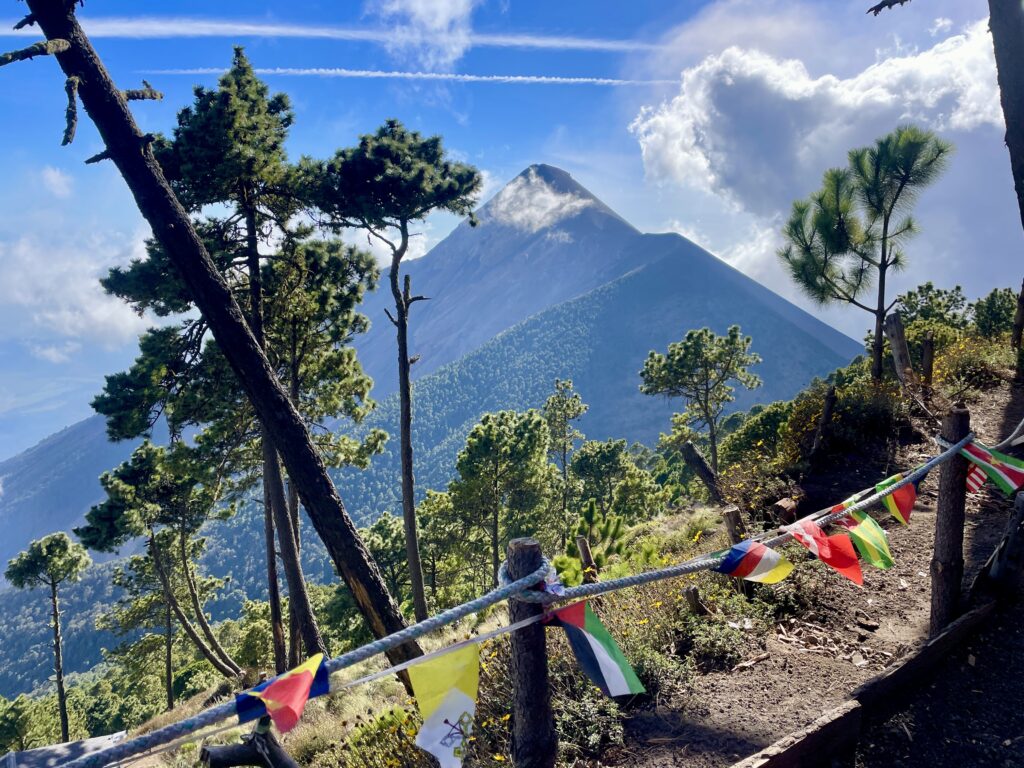
Basic Itinerary of the Acatenango Volcano Hike
This will depend on what company you go with, and how tight of a schedule your group follows, but they will all have similar itineraries. This was our itinerary when we went with Wicho & Charlie’s:
Day 1
- 7 AM to 9 AM: Breakfast, briefing, and packing in Antigua
- 9 AM to 10 AM: Bus ride to the trailhead
- 10 AM to 10:30 AM: Prepping for the hike, bathroom/coffee break and final briefing
- 10:30 to 3 PM: Hike to basecamp
- 3 PM: Lunch
- 4 PM to 8:30 PM: Volcán de Fuego Hike (optional)
- 8:30 PM: Dinner
Day 2
- 4:30 AM to 6:45 AM: Summit Acatenango (optional)
- 7:15 AM: Breakfast
- 8:00 AM: Descent starts
- 11:30 AM to 12:30 PM: Bus ride back to Antigua
The Optional Hikes
The Volcán de Fuego Hike
The Volcán de Fuego hike is a 4-hour hike from the basecamps on Acatenango to the Volcán de Fuego, where you have an amazing view of the sunset from above the clouds as well as a front-row seat to the marvelous eruptions.
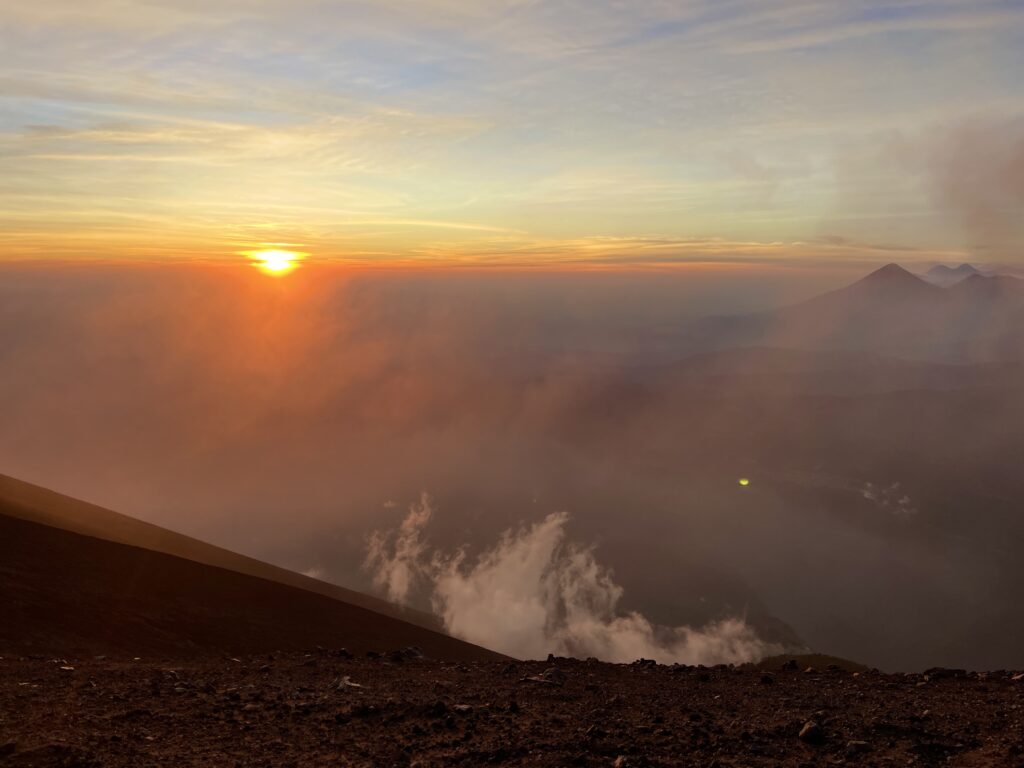
The hike consists of traversing down a steep 400 meters, and then up another 400 meters until you reach the viewpoint. This is physically demanding, and on the way back, you’ll be doing the same thing – except in the dark. Although I was recovering/still suffering from food poisoning which made the hike super hard for us, I still think this was 1000% worth it. The 30 minutes to an hour that you’ll be hanging out here will be extremely cold and windy, so make sure to bring a heavy jacket, windbreaker, hat, gloves & any other warm clothing you have!
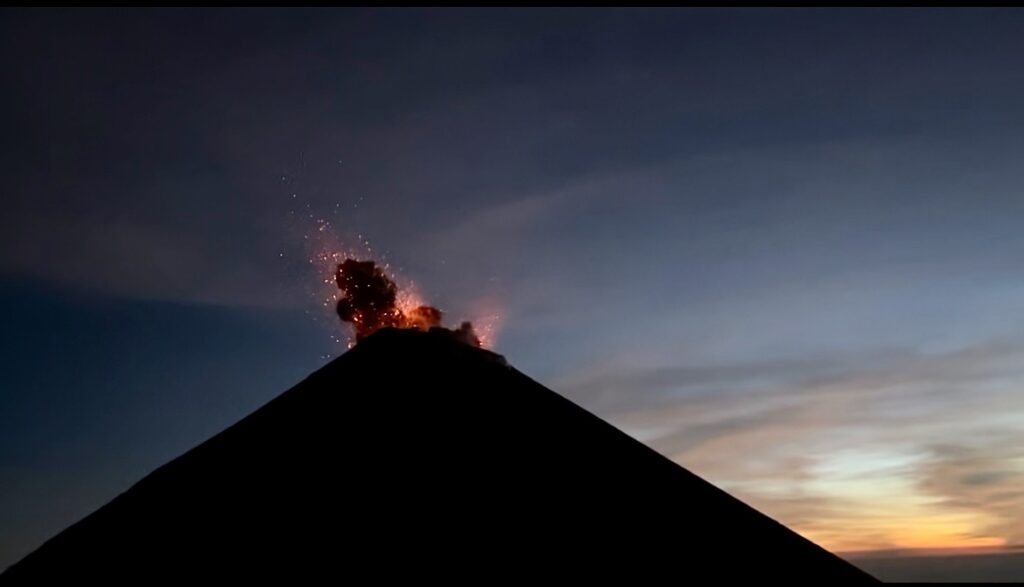
With Wicho & Charlie’s, we had to pay an extra 200 Quetzales (about 25 USD) for this hike, but once again, it was such a once in a lifetime experience that we definitely recommend doing it.
The Acatenango Sunrise Hike
This hike (which did not cost extra) will have you up and ready to summit Acatenango at 4:30 AM. Though we didn’t actually do this hike – our legs were exhausted from the previous day’s hiking! – we heard that the difficulty was similar to that of the Fuego hike (but at least it’s shorter!). This hike will get you to the summit of Acatenango where you’ll relax and watch the sun rise for about 30-45 minutes. Be aware that it will be cold at the summit (especially when it’s still dark), so you’ll want all of your warm gear with you. You’ll return to basecamp around 6:15 and have breakfast with everyone before beginning the trek down Acatenango!
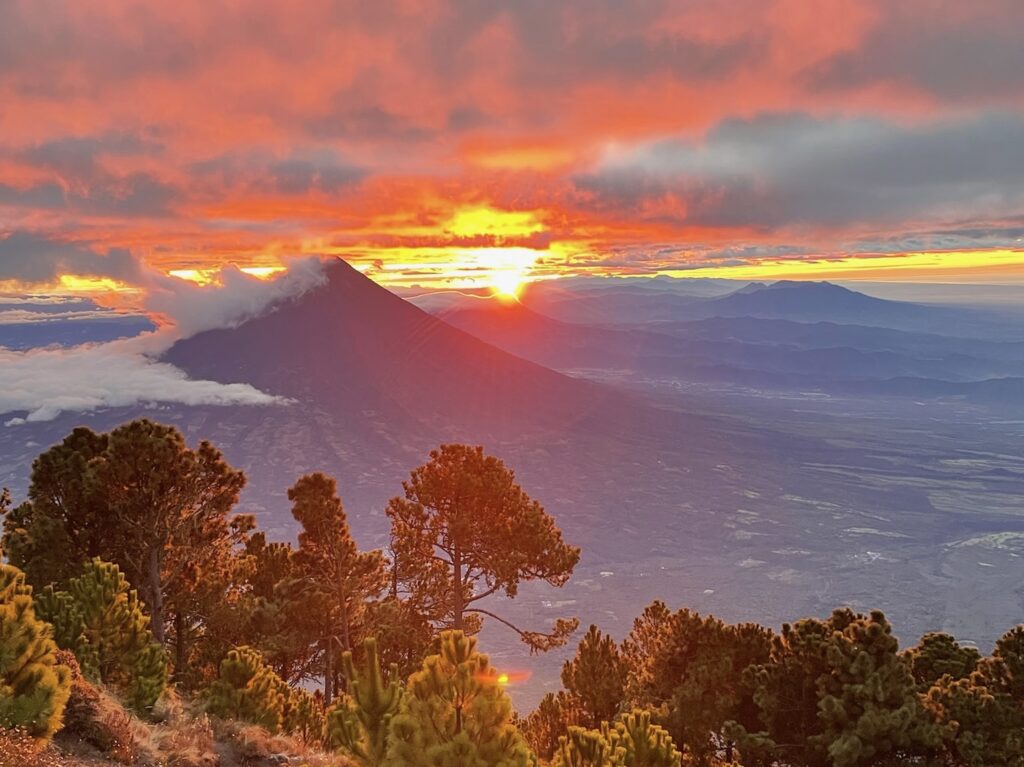
A Note on the Extra Hikes
Not too many people do both of the optional hikes, so don’t feel like you have to do them both if your body is not feeling it. We were pretty certain we were only going to be able to do one since we were both recovering from food poisoning, and we decided on Fuego because we had heard that people who had done both generally preferred the Fuego hike. I think Fuego is probably the better of the two optional hikes because it’s such a unique experience and you’re basically guaranteed to see the lava up close.
For our group, the people who summited Acatenango in the morning actually didn’t even get to see the sunrise from the summit because of how cloudy it was (but we had a great view down at basecamp!). What you’ll get to see totally depends on how the weather is, but I definitely recommend that if you’re going to pick just one optional hike to do, it should be Fuego.
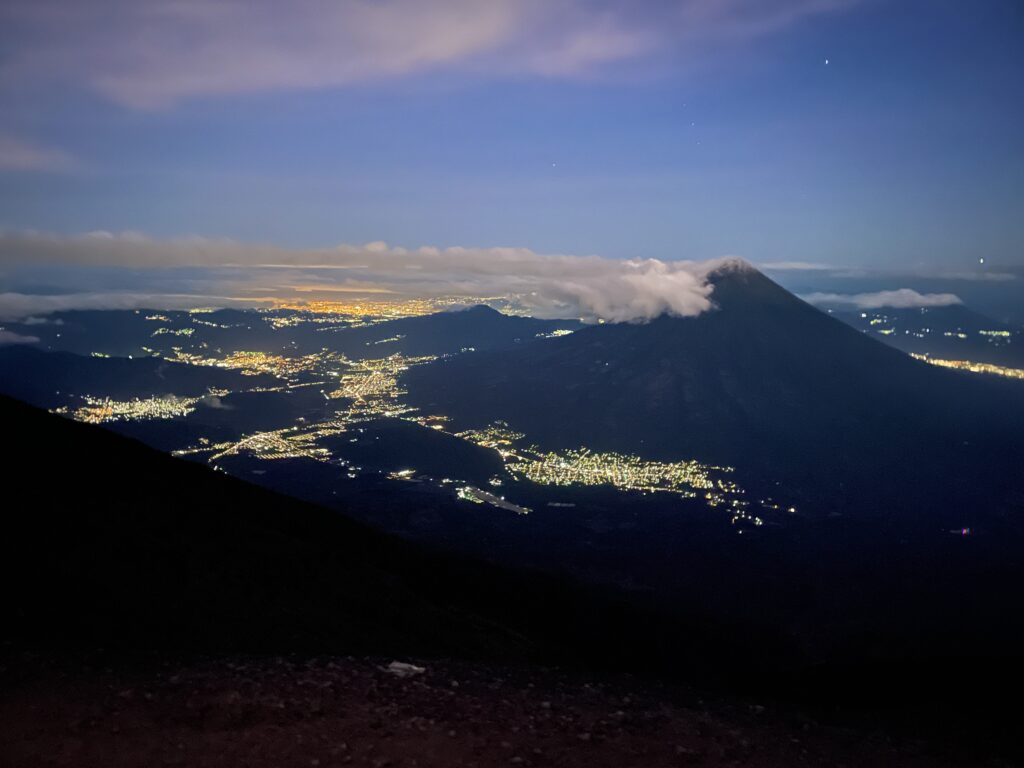
What To Pack For The Acatenango Hike
We had our 40L Osprey Backpack and a 20L backpack that our tour operator provided, which was enough space to put everything in. Your tour operator will likely provide hiking gear and warm clothes, so make sure to check what all they provide ahead of time. As the hike progresses, you’ll drink and eat away at the weight of your packs! While hiking to basecamp, you’ll have to carry your 20L bag provided by the tour operator, but you will also have to carry your heavy bags for the last 45 minutes of the hike unless you pay extra for a porter, so keep that in mind when planning what to pack.
Things We Brought that WERE NOT Provided by Our Tour Operator
- Hiking Shoes with Great Traction: The ground is loose and people were slipping left and right. This is not to be said that you can’t do this with sneakers, but if you have better shoes, now’s the time to whip them out! We recommend this pair of Salomon’s for men and this pair or Jack Wolfskin’s for women.
- Snacks: The hike up was fairly long and you’ll want snacks to boost your energy!
- Power Bank + Charging Cord: There is no electricity at basecamp.
- Ibuprofen
- Altitude Sickness Medication: There is a high probability that at least one person in your tour group will not feel well because of the altitude. If you don’t want to buy a pack of these, Ibuprofen should help with any altitude-induced headaches.
- Sunscreen
- Toothpaste & Toothbrushes
- Electrolyte Packets: Stay hydrated without carrying more water weight.
- Baby Wipes/Toilet Paper: You can bring these to use in the bathroom, but keep in mind that anything you use will have to be brought down with you as you cannot leave trash. You’ll want to bring something to keep this stuff in that won’t contaminate anything else in your bag – we recommend using a plastic water bottle or closable plastic bag.
- Sunglasses
- Long Sleeve Shirt
- Leg Tights or Yoga Pants
Things We Brought that WERE Provided by Our Tour Operator
- 4.5 Liters of Water Per Person (3 1.5 liter bottles)
- Lunch and Breakfast: We had to carry tupperware with these up to basecamp and the empty tupperware back down.
- Windbreaker: The tops of the volcanoes are extremely windy!
- Headlamp: This is crucial for the Volcán de Fuego and sunrise hikes and helps you navigate the campsite at night.
- Gloves: We paid extra to rent premium gloves, which was the best decision of our lives! If you’re not doing either of the optional hikes, you likely won’t need gloves.
- Hiking Poles: These are extremely helpful for summitting these volcanoes, especially the Volcán de Fuego!
- Change of Clothes: You’ll definitely be sweaty after summiting Acatenango, so if you want clean clothes in the morning or at the top, be sure to bring a change of clothes!
- Scarf
- Hat
- Buff
- Fleece
- Thermal Socks
- Heavy Jacket
Best Time Of Year For the Acatenango Hike
The best time of year to do the Acatenango Volcano Hike is during Guatemala’s dry season, which is November to April. You’ll want to avoid muddy trails, but more importantly, have a clear view of the Volcán de Fuego. The wet season brings clouds that might block your view of the magnificent eruptions. Because Acatenango is so high up, the basecamps will be cold year-round, so come prepared!
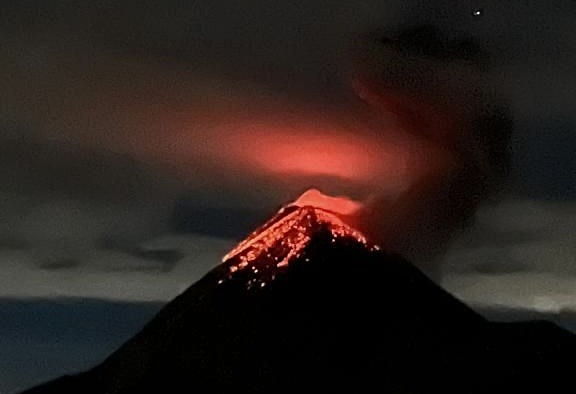
How much does the Acatenango Volcano hike cost?
This depends largely on the accommodation you want at base camp and the company you choose to go with. A private cabin will cost around $340 USD, shared cabins go for around $140 USD, and tents are around $100. There are also add-ons, like the Volcán de Fuego hike, which costs $25 extra.
During the hike up to basecamp, you only carry your big bags for the last 45 minutes. For the rest of the hike, you’ll only have your smaller 20L bag with water and snacks. However, if you don’t want to carry your big bag for those 45 minutes, you can pay a porter to take it up for you for 100 Quetzales (about 13 USD). This also applies on the way back down, when you can pay another 100 Quetzales to get your bag to where the truck will take it the rest of the way down. You can also pay a driver $90/person to bring you up with the bags (3/4 of the way there), so you’ll only have to do around an hour of hiking.
The absolute cheapest way you can do this hike is for $6, which is the entrance fee, if you have your own tent and sleeping bag. You can also rent a tent and other gear from most tour operators. Although you can hike Acatenango Volcano without a guide, it’s safest to just pay for a guide and go with a group.
We went with Wicho & Charlie’s and splurged a bit to get the private cabin, and it was so worth it. We could see Fuego from our window and would wake up during the night when we heard it erupt to watch the lava. It was so cool!
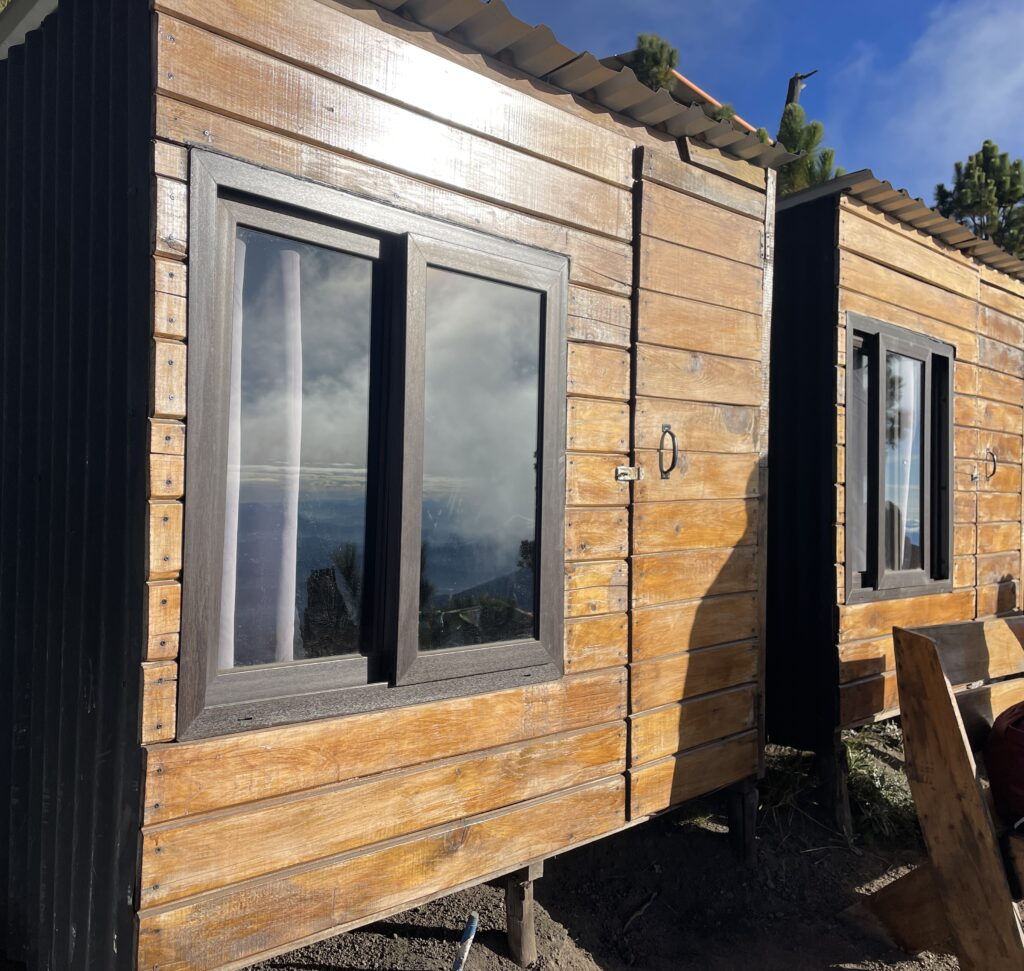
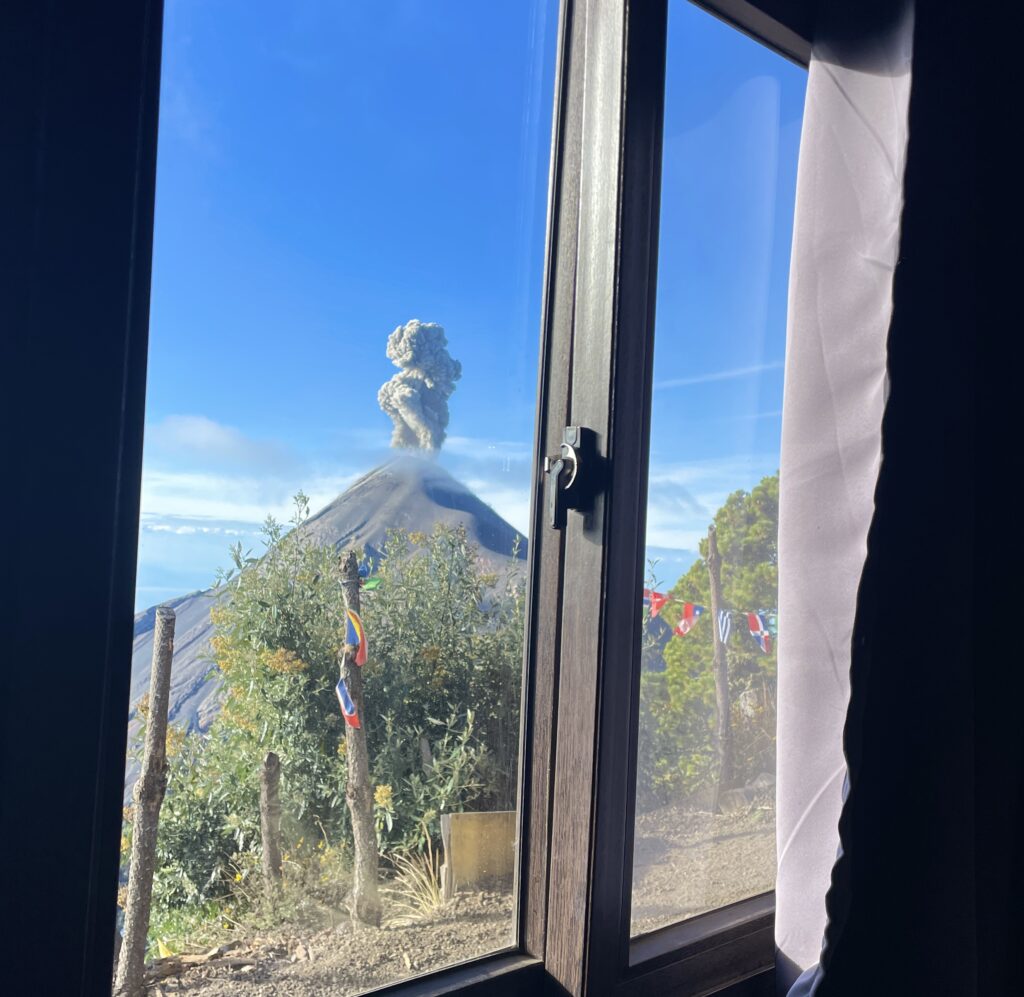
How To Book The Acatenango Volcano Hike?
Many tour operators offer guided tours of the Acatenango Volcano Hike, but the two most popular and respected are Wicho and Charlie’s and OX Expeditions. OX Expeditions is preferable for the budget traveler who doesn’t mind sacrificing comfort for an amazing experience. Wicho and Charlie’s is best for those willing to pay a little more for comfort and sustainability-focused services. We went with Wicho and Charlie’s and were extremely satisfied with our guides and the overall experience! Make sure that the tour operator you go with includes all the services you need!
All tours start in Antigua, so make sure to spend at least one night there because the tours start early. We highly recommend spending a few nights in Antigua – it was our favorite place in all of Guatemala!
Read about the Best Things to Do in Antigua
How Difficult Is The Acatenango Volcano Hike?
The hike is fairly difficult. It is 3-5 hours (depending on how often your group stops), the ground isn’t very firm, and the altitude will certainly tire you out. One person in our group got altitude sickness in the first 30 minutes of the hike and had to call it quits. That being said, our group had ladies in their 50s who were able to do this hike. Adding the Volcán de Fuego and the sunrise hikes will make this a much harder experience, although they are definitely worth it!
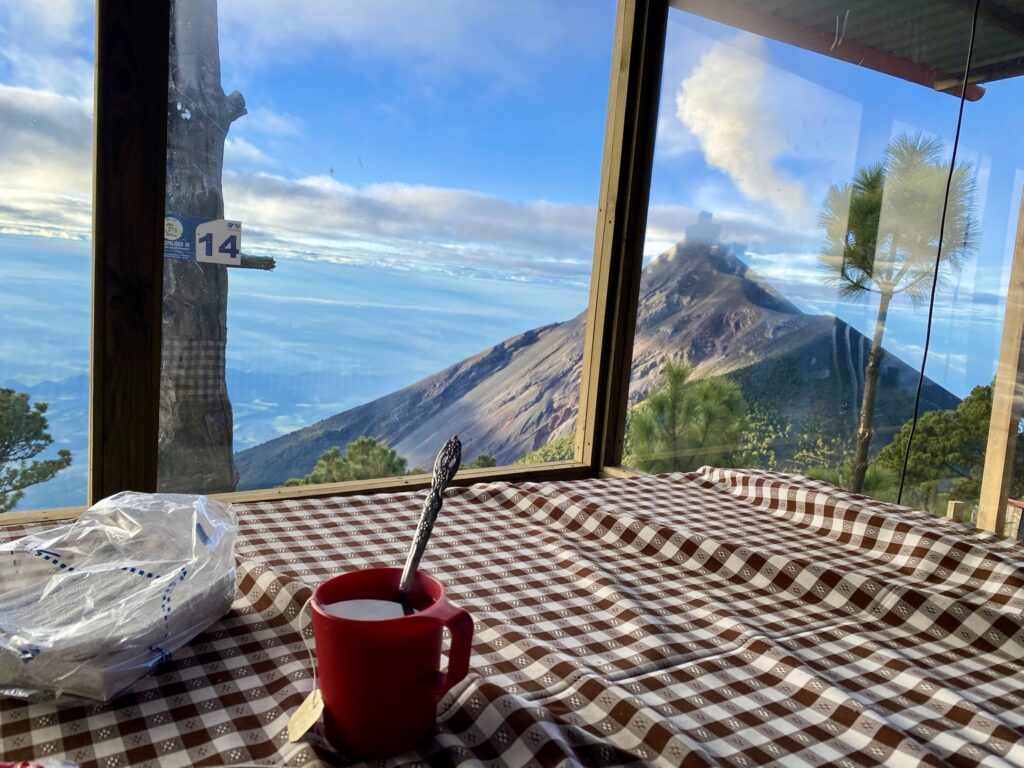
Is the Acatenango Volcano Hike Worth it?
The Acatenango Volcano Hike is 100% worth it. If you aren’t in amazing physical shape, you can book a driver to take you up 3/4 of the way to the basecamp with Wicho and Charlie’s, then hike for an hour to experience these amazing natural wonders. Even the views from the trail were amazing! You’ll pass through farmland, mossy rainforests and alpine forests, all while looking at the greater Antigua region from above. We have never experienced something like this and it’s no wonder this is the highlight of many travelers’ trips to Guatemala!
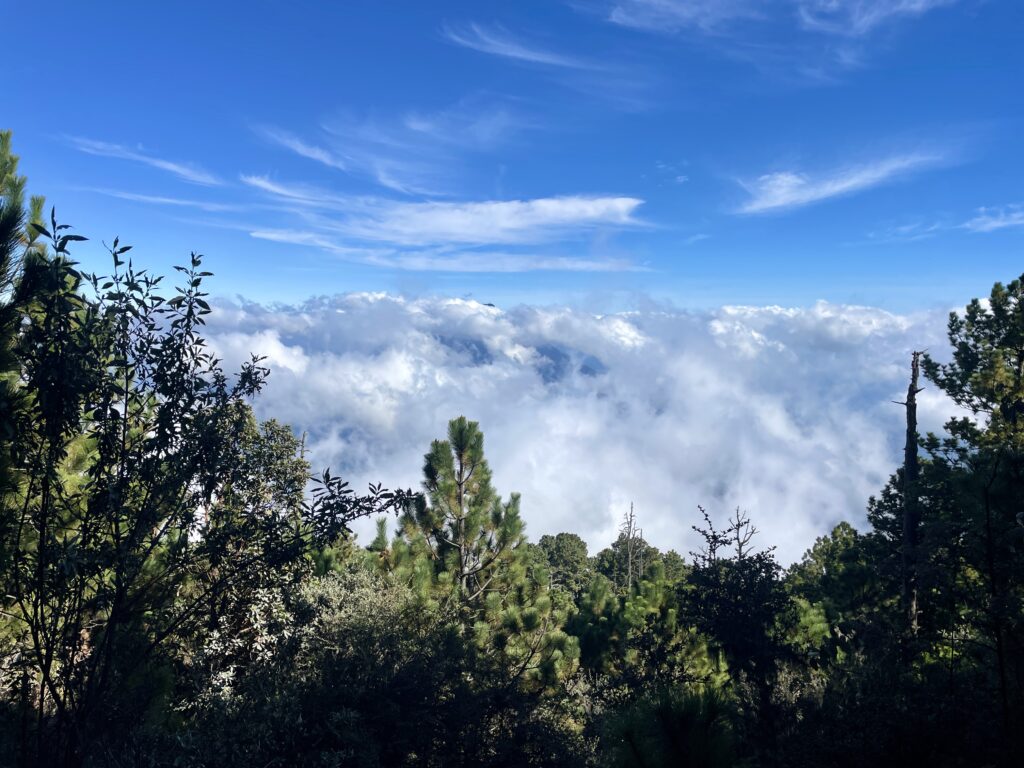
What Is the Elevation Of Acatenango Volcano?
Acatenango Volcano has an elevation of 3,976 meters. The base camps are around 3,600 meters high and the trailhead is around 2,400 meters. So you’ll hike for an elevation gain of 1,200 meters, and even more if you do the sunrise hike to the summit of Acatenango. The Volcán de Fuego is a bit shorter than Acatenango at 3,768 meters above sea level.
How Often Does Volcán de Fuego Erupt?
The Volcán de Fuego erupts every 20-30 minutes and can vary in size each time. The larger eruptions produce a loud roar and big spurts of lava!

Is the Acatenango Volcano Hike Safe?
While robberies used to be common, the trail is fairly safe due to its increasing popularity. As far as natural disasters go, you should keep a safe distance from the Volcán de Fuego, but the guides will definitely keep you safe in this regard!
Keep Exploring Guatemala…
- The Best Things to do in Guatemala
- Guatemala Itinerary: An Epic 2 Week Adventure
- Best Things to do in Antigua
- From Antigua to El Salvador By Bus: Your Ultimate Guide
- Complete Guide to Semuc Champey: Everything You Need to Know Before You Go
- Antigua to Lake Atitlan (and Back!) Using Public Transportation
- Lake Atitlan: Everything You Need to Know Before You Go
- Incredible Things to do in Flores
- The Ultimate Guide to Visiting Tikal in Guatemala
Our Favorite Travel Resources
Accommodations: We use Booking.com for hotels and HostelWorld for hostels. We also use VRBO or TrustedHousesitters for longer stays.
Flights: We recommend using Skyscanner to find the cheapest and best flights.
Ground Transport: We use 12Go and Omio for buses and private transfers, and rentalcars.com and Discover Cars for rental cars.
Activities: GetYourGuide and Viator are the best websites for booking organized tours.
International Medical Insurance: We highly recommend SafetyWing for Digital Nomads and HeyMondo for those not traveling full-time, or who frequently engage in higher-risk adventure activities.
eSIM: We recommend Airalo or Holafly for getting data internationally.
Check out our Travel Resources Page for more of our favorite travel-related products and services!


